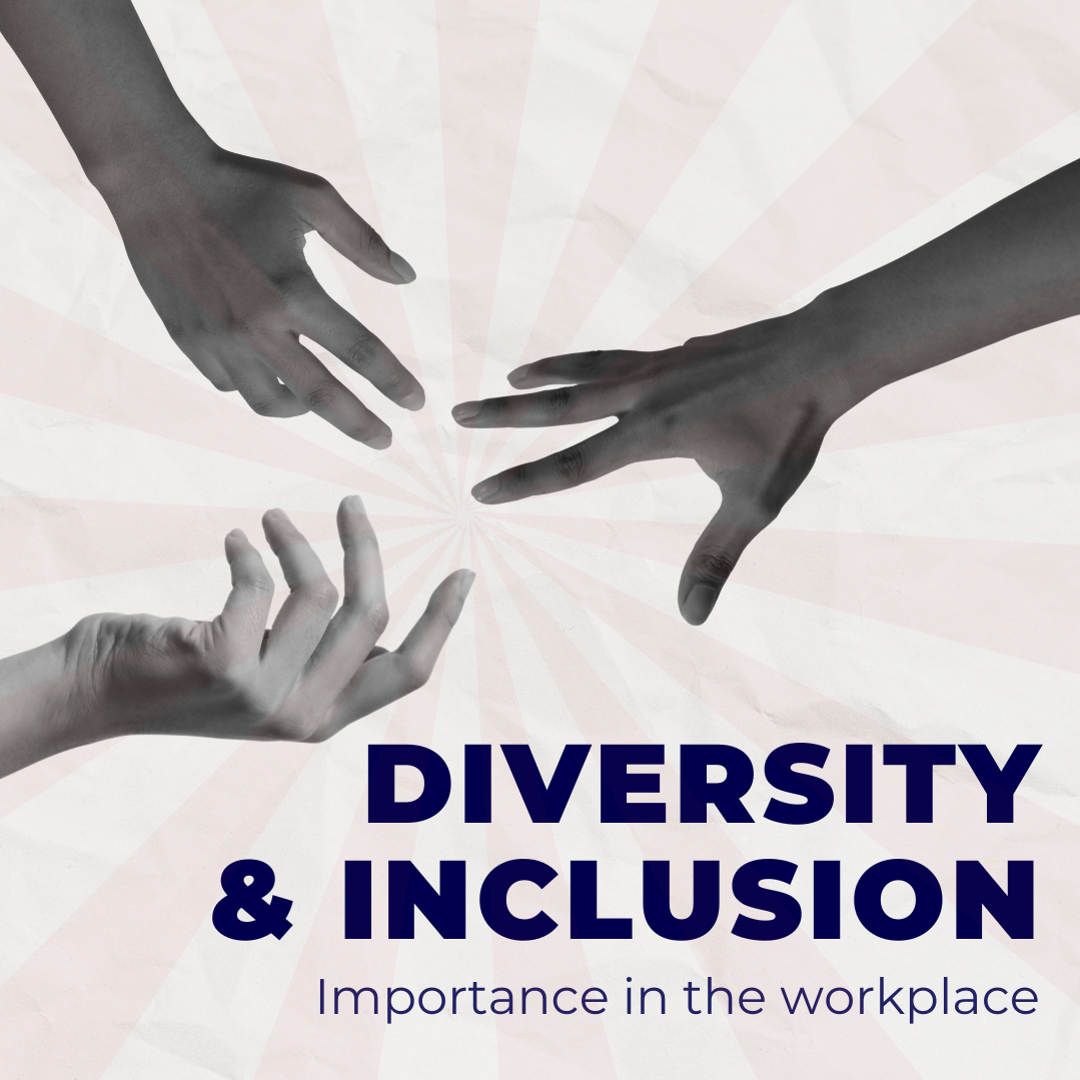OPINION
AFCON 2024: 3 Tactics The Super Eagles Used To Defeat The South African Team
Published
7 months agoon

The Super Eagles soared to victory in the AFCON 2024 semi-final against South Africa, securing their place in the coveted final match! This triumph didn’t come simply through luck but rather through strategic adjustments implemented by their head coach, Jose Peseiro.
Peseiro recognised the need for changes and didn’t hesitate to adapt. Whether it was tweaks in player positioning, adjustments to the team’s attacking strategy, or even surprise substitutions, his interventions proved necessary. These calculated modifications helped the Super Eagles overcome challenges posed by their South African opponents, ultimately leading them to a hard-fought win.
Jose Peseiro’s impact goes beyond just the semi-final. Throughout the tournament, he has demonstrated a keen understanding of his team’s strengths and weaknesses, consistently making tactical adjustments that have propelled them forward. His ability to read the game’s flow and adapt accordingly has been a key factor in the Super Eagles’ reaching the final, leaving fans excited to see what strategic brilliance he might bring to the championship match.
Peseiro’s use of a low-block
Coach Peseiro threw a curveball in the AFCON semi-final against South Africa! Instead of their typical high-pressing approach, he opted for a more conservative tactic, packing the defence and sitting deeper.
This shift aimed to preserve energy for a long, gruelling match and allow Nigeria to pick their spots for offensive bursts. The first half reflected this strategy, with a cautious approach from both sides and few scoring opportunities.

But like a coiled spring, the Super Eagles exploded after the break. Peseiro’s plan seemed to click as they transitioned from defence to attack with renewed vigour. Several chances arose, with Nigerian attackers putting the South African defence under pressure.
The fans roared with each near miss, the tension thick in the air. Yet, despite their newfound momentum, the forwards just couldn’t find the finishing touch, leaving the outcome hanging in the balance and setting the stage for a dramatic finale.
Perfect substitutions
The pressure was mounting for Nigeria as the match against South Africa wore on. Their midfield, which was initially strong, began to show signs of fatigue. This is where Alhassan stepped in, like a shot of espresso! Although he made a mistake that led to a penalty for South Africa, his tireless energy revived the entire midfield, injecting much-needed dynamism.
Coach Peseiro recognised the shift and made a bold move at the start of extra time. He brought in fresh legs with Joe Aribo and Kelechi Iheanacho, giving the Super Eagles a significant boost.
In contrast, South Africa seemed to be running on fumes, both mentally and physically. This strategic substitution by Peseiro proved crucial, tipping the scales in Nigeria’s favour and paving the way for their eventual victory.
Peseiro gave Iheanacho his moment
The AFCON semi-final against South Africa was a tense affair, filled with twists and turns. Kelechi Iheanacho, a talented yet underused player in the tournament, found himself at the centre of one such twist. Despite rumours of a rift with head coach Peseiro and his absence from previous matches, Iheanacho remained on the sidelines, watching the drama unfold.

As the game stretched into extra time and ultimately a penalty shootout, the pressure mounted. Nigeria’s qualification for the finals hung in the balance with each missed or converted kick. Then, in a surprising move, Peseiro turned to the seemingly forgotten Iheanacho. Stepping up with nerves of steel, Iheanacho calmly slotted the final penalty home, sending the stadium into a frenzy and his teammates into celebration.
Get the latest and greatest updates right away! Join our exclusive WhatsApp channel and never miss out on exciting news again.
This dramatic scene wasn’t just a moment of individual glory; it was a potential turning point for Iheanacho in the tournament. His decisive contribution under pressure could rewrite his narrative, earning him the trust of the coach and a coveted spot in the final against Ivory Coast. With his talent and the momentum of his last-minute heroics, Iheanacho might finally get the chance to shine on the biggest stage, leaving his mark on the AFCON and silencing any lingering doubts about his role in the team.
So, the question remains: will Iheanacho’s penalty heroics translate into a starting role in the finals? Can he build on this momentum and become a force for Nigeria as they vie for the championship trophy? Only time will tell, but one thing is certain: Iheanacho has grabbed the spotlight with both hands, and his AFCON story is far from over.
Looking for more sports updates? Visit here.
You may like
-


Check Out These 10 African Footballers Who Own Jets
-


Vitor Roque Left Barcelona In Tears After Being Sacrificed To Aid Struggling Finances
-


British-Nigerian Speed Sensation, Divine Iheme Shatters Age-14 World Record
-


PSG Reach Agreement For Ademola Lookman Ahead Of Sensational Transfer
-


Meet Jamaica’s New Stunning Power Couple Who Starred At Paris 2024 Olympics
-


Victor Osimhen: Chelsea Finally Find Perfect Way To Land Super Eagles Striker
BUSINESS
Why Is Diversity And Inclusion In The Workplace Important?
Published
6 days agoon
September 1, 2024
Diversity and inclusion in the workplace are essential. More than just policies or headcounts, equitable employers gain a competitive edge by respecting the unique needs, perspectives, and potential of their diverse workforce. As a result, these workplaces earn deeper trust and stronger commitment from their employees.
What’s the Difference Between Diversity and Inclusion?
Diversity and inclusion are interconnected but distinct concepts. Diversity is about representation, focusing on the makeup of a group. Inclusion is about valuing and integrating the contributions and perspectives of different groups into the environment.
A workplace may be diverse with various genders, races, nationalities, and sexual orientations present. However, if only certain groups’ perspectives are valued or hold influence, the environment is not inclusive.
What Is Diversity and Inclusion in the Workplace?
A diverse and inclusive workplace ensures that everyone, regardless of their role or background, feels equally involved and supported in all areas. This inclusiveness must permeate every part of the workplace.
For instance, do you have diversity in recruiting, within departments, and in leadership? Or do you have a diverse workforce where women make up 50% of employees but hold 0% of managerial positions? Are employees of colour well-represented, but only within a single department?
These questions reveal the true extent of diversity and inclusion within a workplace.
Why Is Diversity and Inclusion Important in the Workplace?
Research highlights numerous benefits of a diverse and inclusive workplace, such as higher revenue growth, greater readiness to innovate, and increased ability to recruit a diverse talent pool. Additionally, inclusive workplaces experience 5.4 times higher employee retention rates.
Inclusion is a key factor in employee retention. When employees feel that their ideas, presence, or contributions are undervalued or ignored, they will eventually leave. Our research shows that employees who trust they will be treated fairly, regardless of race, gender, sexual orientation, or age, are:
– 9.8 times more likely to look forward to work.
– 6.3 times more likely to feel pride in their work.
– 5.4 times more likely to stay at their company long-term.
An inclusive workplace culture not only attracts diverse talent but also helps retain it.
1. Diverse organizations spark innovation.
Innovation thrives when people from different backgrounds contribute unique perspectives. Diverse teams approach problems from various angles, leading to creative solutions that homogeneous groups might overlook.
2. Diverse leadership expands an organization’s customer base.
Leaders from varied backgrounds understand and relate to a wider range of customers. They identify untapped markets and create products or services that appeal to diverse consumer groups, ultimately growing the organization’s reach.
3. Diverse teams get better answers.
Team members with different experiences and knowledge bases challenge each other’s assumptions. This questioning leads to more thorough analysis and often results in superior solutions to complex problems.
4. Diverse project teams collaborate more effectively.
People from varied backgrounds bring complementary skills to projects. They leverage each other’s strengths, compensate for weaknesses, and find innovative ways to work together, enhancing overall team productivity.
5. Diversity improves team performance.
Diverse teams often outperform homogeneous ones. The combination of different skill sets, perspectives, and problem-solving approaches leads to higher-quality outputs and more efficient work processes.
6. Diverse teams make better decisions.
Teams with varied backgrounds consider a wider range of options when making choices. They evaluate decisions from multiple viewpoints, reducing blind spots and biases that can lead to poor judgment.
In essence, diversity and inclusion are crucial to a strong employee retention strategy.
What Is an Inclusive Workplace?
Diversity without genuine inclusion is often seen as “tokenism.” A truly inclusive workplace does more than simply present a diverse group of people. It involves, develops, empowers, and trusts these individuals, ensuring that diversity efforts extend beyond superficial gestures.
What’s the Difference Between Diversity, Inclusion, and Belonging?
Diversity refers to the representation of different people within an organization. Inclusion ensures that everyone has an equal opportunity to contribute and influence all levels of the workplace. Belonging ensures that everyone feels safe and can bring their full, unique selves to work.
These concepts can be confusing, and many companies make simple mistakes in their diversity or inclusion efforts. Thankfully, these mistakes can be corrected if workplaces are aware of them.
Unfortunately, many organizations fail to recognize what’s right and wrong in their diversity and inclusion strategies unless they actively seek to understand them.
Why is it important to achieve diversity and inclusion in the workplace?
Equitable employers prioritize creating a workplace that values and respects the unique needs, perspectives, and potential of their diverse workforce. This approach goes beyond implementing policies, and programs, or simply focusing on headcounts. By fostering a culture of inclusivity, equitable employers gain a significant advantage over their competitors.
As a result of their commitment to diversity and inclusion, these employers earn deeper trust and loyalty from their employees. When employees feel valued, respected, and empowered, they are more likely to be committed to their work and the organization.
For more articles like this, visit here.

BDSM encompasses types and a broad range of erotic practices and kinks. These practices build on power dynamics between consenting sexual partners. The term “BDSM” combines three acronyms. Each acronym represents a distinct community that uses power imbalance for sexual pleasure.
B/D stands for bondage and discipline. D/s refers to domination and submission. S/M denotes sadism and masochism. In BDSM encounters, one partner typically takes on the dominant role, often called the “dom.” The other partner embodies the submissive role, known as the “sub.” Together, they act out consensual fantasies.
Both partners derive sexual pleasure and satisfaction from performing their chosen roles during the encounter. The dominant partner may exercise control, while the submissive partner yields to that control. This power exchange forms the core of many BDSM practices.
The BDSM community often includes other “kinky” groups with nonconforming sexual interests or fetishes. For example, some individuals have rubber or leather fetishes. Others enjoy animal roleplay, where one partner takes on the role of an animal or pet.
BDSM emphasizes consent, communication, and mutual enjoyment. Participants negotiate boundaries and establish safe practices before engaging in activities. They often use safe words to ensure all parties can stop the action if needed.
BDSM encompasses various sexual preferences within the erotic community. These preferences interact and overlap in multiple ways.
4 main types dominate the BDSM outlook:
1. Bondage Play
Practitioners use tools to restrain one partner during sexual encounters. Common restraints include rope, leather straps, bondage tape, ties, handcuffs, spreader bars, ball gags, blindfolds, and chains.
These tools restrict the subject’s senses or movement, transferring control to the other partner. This restriction aims to heighten mutual sexual stimulation.
2. Discipline
The dominant partner establishes rules for the submissive partner to follow. These rules may be explicitly sexual, such as requiring oral sex at specific times. They can also be indirectly erotic, like prohibiting speaking out of turn.
When the submissive partner breaks a rule, the dominant partner assigns punishment. Punishments vary from withholding pleasure to inflicting pain (e.g., spanking or flogging) or imposing additional rules. Both partners find sexual gratification in this discipline roleplay.
3. Dominance and Submission (D/s)
D/s focuses on power and energy exchange between partners. One partner typically dominates the other physically, mentally, emotionally, or sexually during a “scene” or “session.” The dominant partner explores the submissive partner’s desires, thoughts, and feelings, guiding both towards mutual pleasure.
Some practitioners, known as “switches,” enjoy alternating between dominant and submissive roles. D/s often incorporate specific attire during scenes, such as leather outfits, maid costumes, collars, leashes, and riding crops.
4. Sadomasochism
In this community, individuals derive sexual pleasure and endorphin rushes from inflicting or receiving pain, always consensually. Sadists enjoy inflicting pain, while masochists find pleasure in receiving it. The pain can be physical, involving whips, clamps, paddles, or electric stimulation. It can also be emotional, encompassing humiliation or total submission.
These four types of BDSM often intertwine and overlap in practice. Practitioners may engage in one or more types, tailoring their experiences to their specific desires and boundaries.
All BDSM activities emphasize consent, communication, and mutual enjoyment between partners.
6 tips for practising BDSM safely
1. Set ground rules with your partner
Establish clear boundaries and agreements with your partner before engaging in BDSM play. Discuss your comfort levels, desired roles, and expectations openly. Avoid pressuring each other into specific roles.
If you feel nervous about initiating the conversation, consider watching light BDSM erotica together to gauge interest. Learn effective ways to communicate about sex with your partner.
2. Select a safe word
Choose at least one safe word with your partner. Use this word to signal when a boundary has been crossed or when you need a break. Consider selecting two different safe words: one to stop all action immediately, and another to indicate approaching a boundary, prompting a change in direction.
3. Brainstorm roleplaying ideas
Explore various roleplay scenarios to ease into BDSM and overcome self-consciousness. Consider common dynamics like boss and employee, teacher and student, doctor and patient, or two strangers. These roles can help you distance yourself from the situation and relax into the experience.
4. Start small
Begin with light BDSM types if you’re new to the practice. Avoid purchasing complex equipment or expensive outfits initially. Focus on exploring discipline or D/s sessions that require only willing participants and imagination. If you want to buy equipment, start with simple items like blindfolds and wrist restraints.
5. Understand risk
Familiarize yourself with two main approaches to risk in BDSM: the “safe, sane, and consensual” (SSC) model and the “risk-aware consensual kink” (RACK) model.
SSC emphasizes predetermined safety measures, while RACK acknowledges inherent risks and empowers participants to evaluate and consent to them individually. Choose the approach that aligns with your comfort level and risk tolerance.
6. Prioritize aftercare
Engage in thorough aftercare following BDSM sessions to address physical and emotional needs. Discuss the experience with your partner, cuddle, and clean up together.
These activities help everyone wind down, process the session, and foster a sense of calm and well-being. Aftercare promotes physical wellness and emotional stability for all participants.

We hear it constantly: Relationships require you to “be vulnerable” with your partner. This advice is repeated so often that it has almost become background noise in dating. This is along with other common phrases like “communication is key” and “relationships take hard work.”
Despite being a buzzword, vulnerability is a complex concept. It’s also a trait that doesn’t come easily or naturally to everyone.
What does it mean to be vulnerable?
In relationships, being vulnerable means showing someone exactly who you are and how you feel without disguise, bravado, or ego defences, exposing yourself to the possibility of hurt or rejection.
Being vulnerable means you make a conscious decision not to hide yourself. This is risky because you can’t control how others will respond to you. It means others see who you truly are, and if they aren’t able to accept you, appreciate your complexity, or they judge or reject you, it hurts deeply.
Being vulnerable with someone means risking being your true self.
People struggle with vulnerability because they fear getting hurt, typically in the form of rejection, judgment, or betrayal from others. You may begin to put on a brave face, act indifferent, suppress emotions, or step into a role meant to protect yourself from these risks.
The irony is, when you do this, you end up robbing yourself of the intimacy, connection, community, and love of the people who have the bandwidth and capacity to accept you as you are.
How can you be emotionally vulnerable?
- Directly telling someone that you think they’re cool and are interested in getting to know them better
- Letting someone know that something they said hurt your feelings
- Telling someone when you’re feeling ashamed or embarrassed
- Acknowledging when you’ve made a mistake and apologizing for it
- Asking for feedback on a project you care a lot about and worked hard on
- Opening up to someone about an experience of trauma or hardship
- Asking someone for help
- Telling a friend that your relationship has been rocky lately and asking for support
- Listening to someone explain a way in which you’ve hurt them, without trying to explain what happened or defend your character
- Letting people know about your insecurities or struggles
- Allowing yourself to feel hopeful and excited about a budding relationship, even though things are still new and uncertain
- Setting a boundary with someone
- Talking openly about your negative emotions—such as anger, fear, disappointment, or jealousy—without trying to cover them up or deflect from them
- Telling someone about a time when someone made you feel small
- Believing and trusting in someone completely, putting your faith in them that they’ll come through for you
7 ways to be more vulnerable in a relationship

1. Get to know your inner world better
To show people your true self, you first need to know your true self. This begins with exploring yourself beyond your default attitudes. Pay attention to your knee-jerk reactions when something positive or negative happens. Ask yourself, “If I didn’t hide behind this reaction, is there more going on here for me?”
Allow yourself to recognize how you feel in different situations, tune in to your body, and practice saying how you genuinely feel about things out loud. It can be surprisingly powerful to say, “I feel angry toward my sister” or “I feel scared of being alone” because often, we don’t even allow ourselves to be vulnerable with ourselves.
2. Say how you really feel about things
Once you’re more in touch with your own emotions, start sharing them with others. Practice telling your partner how you really feel about things, even if it seems silly.
If you miss your partner, send them a text and let them know; if your partner hurt your feelings with a small comment this morning, tell them honestly how it felt. If you really enjoy hanging out with him/her, let them know.
3. Accept the risk
The truth is that being vulnerable means accepting the risk of getting hurt. This means you can’t always wait for a situation where you’re perfectly safe or certain that you won’t get judged or rejected.
There’s always a degree of risk involved when you’re genuine and honest. Even if you’re vulnerable and it doesn’t end up creating intimacy and connection, or it isn’t received well, that’s okay. Being vulnerable doesn’t guarantee that things will go your way in all your relationships.
Learn to practice acceptance for these moments and build tolerance for the emotions that may accompany them.
4. Work on healing your attachment wounds
The fear of abandonment or getting hurt by others often stems from past experiences where that very thing happened. These are sometimes known as attachment issues, and it can help to explore these wounds with a mental health professional.
The goal is to develop what’s known as a secure attachment style. A securely attached person tends to be much more comfortable with vulnerability. They know that it is OK to need or depend on others, and they value being needed in return.
Intimacy and vulnerability are not a challenge, as a securely attached individual has a strong sense of self and isn’t dictated by fear of rejection or a fear of losing themselves.
5. Invite feedback from others
Asking your partner (or anyone) to give you their honest thoughts about you, your work, or your behaviour is an intensely vulnerable act—but it’s also something that can lead to more intimacy and accountability in your relationship.
When asking for feedback, be approachable and accountable. Expressing yourself vulnerably while inviting feedback could improve your connections. It gives people a chance to express themselves and convey any roadblocks or areas of friction.
6. Be upfront about the things you want
Vulnerability in dating can simply look like prioritizing your truth. It isn’t just about pouring your heart out and sharing all your past traumas (though that can be part of it eventually). You can start with something as small as being open about exactly what you want from a potential relationship. Also, you can simply be radically honest with someone you’re going on a date with.
Try answering every question with a completely true answer. If your date wants to get coffee but you don’t like coffee, don’t agree to have coffee. If you want to take a walk around the park, say you want to take a walk around the park. The building blocks of vulnerability start with honesty.
7. Remember why you’re doing this
Finally, it’s important to remember that vulnerability isn’t about getting other people to like you more or really getting anything out of others.
We need to remember we’re not being vulnerable to get people to act a certain way toward us. It’s not a tool of manipulation. It’s a tool of liberation. We should do it for ourselves.
No matter how the situation unfolds after you open yourself up, know that you’ve already benefited—because you showed up as your full self.
There’s only one you, and you were born to experience who you are as fully as possible and as often as possible, free of masks, defences, disguises, and shields.
How to make a man feel vulnerable?
To encourage a man to be vulnerable with you, ask open-ended questions that explore his experiences, ambitions, and emotions. Demonstrate genuine curiosity, making it clear that you’re interested in understanding him on a deeper level without being intrusive.
The takeaway
Being vulnerable is a risk, but it pays dividends in our relationships by allowing others to get close to us and know us more fully. Even if it doesn’t come naturally to you, you can learn how to be vulnerable by practising small acts of emotional bravery whenever and wherever possible.
For more articles on relationships, check here.
Latest


Drink More Water Daily For Health Boost With These 12 Simple Tips
To increase your daily water intake, try incorporating tips to drink more water daily, such as tracking how much you...


10 Breathing Exercises For Stress Relief
For high stress relief, incorporate breathing exercises into your routine. These exercises can promote calmness and relaxation, requiring only a...


13 Stunning Ways To Style Small Locks
Small locks, also known as micro locs or sister locks, offer a versatile and low-maintenance hairstyle that’s gaining popularity among...


How Fast Fashion Impacts The Environment
Sadly, the arrival of fast fashion has dramatically changed the fashion landscape. Trends no longer fade away gradually; they are...


7 Scary Nigerian Myths We Were Told As Kids
In Nigeria, there’s a special kind of magic that you can’t just see. It’s a feeling. I want to share...


D’banj Is The Only Nigerian Man That Has Given Me Free Money – Toke Makinwa Reveals
Nigerian media personality Toke Makinwa has shared a heartwarming story about her encounter with singer D’banj. She revealed that he...


Enugu State Governor Names Street After Viral Musician, Gentleman Mike Ejeagha
People often hailed Gentleman Mike Ejeagha as the grandfather of Igbo folk music. He has remained an iconic figure in...


Omoni Oboli’s “Last Year Single” Debuts On Netflix This September
Nollywood actress and director, Omoni Oboli, has announced that her debut series, “Last Year Single,” produced in 2020, will premiere...


Ayra Starr Joins Tems On Stage For Surprise Performance
Following the release of her debut album, “Born In The Wild,” Tems has embarked on a world tour, where she...


When Young Girls Sit Down And Daydream About Getting Married, I Never Did – Nancy Isime
Nigerian actress Nancy Isime has shared her views on marriage, revealing that, unlike many young girls who dream of their...
-Ad-




The Rich Culture & Style Of Nigerian Traditional Clothing

Makeup For Black Skin: Mastering Soft Glam Tutorials

Are You A Gen Z? These Nutrition Tips Are Just For You!

Here’s Why Sexual Health Education Is Important

How To Cook White Soup (Ofe Nsala)

6 Wellness Practices For The Millennials

New Inkbot Film “The Betrayed” Earns ₦14.7 Million After One Week In Cinemas

Food & Wine Pairings: A Guide To Enhancing Your Dining Experience

Check Out These Nigerian Cocktail Recipes

The Quietest Room On Earth: You Win $5 Million If You Can Stay For One Hour
Trending
-

 ENTERTAINMENT5 days ago
ENTERTAINMENT5 days agoIyabo Ojo Confirms Daughter’s Engagement To Tanzanian Lover
-

 DRINKS7 days ago
DRINKS7 days ago8 Best Healthy Juice Cleanse Recipes
-

 ENTERTAINMENT5 days ago
ENTERTAINMENT5 days agoRema Donates ₦105M To Edo Church That Opened Shop For His Mum
-

 OPINION6 days ago
OPINION6 days ago5 Types Of BDSM And Practice Tips
-

 NEWS4 days ago
NEWS4 days agoMiss Universe Nigeria, Chidimma Adetshina Promises To Make Nigeria Proud
-

 MOVIES4 days ago
MOVIES4 days agoDaniel Oriahi’s “The Weekend” Makes ₦8M In Its First Weekend
-

 ENTERTAINMENT5 days ago
ENTERTAINMENT5 days agoMercy Aigbe Celebrates Priscilla Ojo’s Engagement
-

 MOVIES3 days ago
MOVIES3 days agoDaniel Oriahi’s “The Weekend” Officially Selected For BFI London Film Festival

